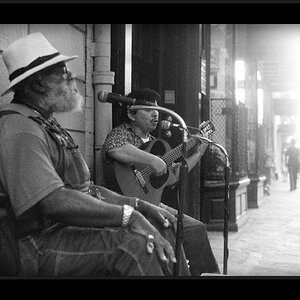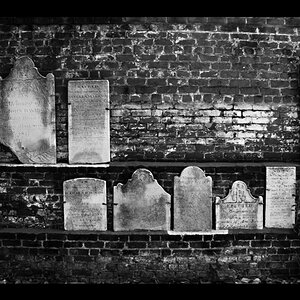I know that the higher iso has more grain and is more sensitive to light and the lower the opposite. And the higher iso they just add less of the cemical or something to make it more sensitive, but what does the number actually mean? Does it like have to do with 100 (100 iso) of something or 800 (800 iso) of something or rather?
Navigation
Install the app
How to install the app on iOS
Follow along with the video below to see how to install our site as a web app on your home screen.

Note: This feature currently requires accessing the site using the built-in Safari browser.
More options
You are using an out of date browser. It may not display this or other websites correctly.
You should upgrade or use an alternative browser.
You should upgrade or use an alternative browser.
iso speeds and grainy
- Thread starter grooski
- Start date
- Joined
- Jul 3, 2004
- Messages
- 3,714
- Reaction score
- 531
- Location
- Here N There
- Website
- img24.photobucket.com
The ISO number represents the size of the photo cells if I am correct. So, ISO800 film has larger photo cells than ISO 100, thus reacts to light quicker but you also see larger grain.
ksmattfish
Now 100% DC - not as cool as I once was, but still
- Joined
- Aug 25, 2003
- Messages
- 7,019
- Reaction score
- 36
- Location
- Lawrence, KS
- Website
- www.henrypeach.com
- Can others edit my Photos
- Photos NOT OK to edit
You stumped me.  I don't know what the number itself represents.
I don't know what the number itself represents.
ISO stands for "International Standards Organization", and used to be called ASA for "American Standards Association". The old European film rating system was DIN; I don't know what that stands for, but the scale is different than ISO/ASA.
Doubling or halfing ISO numbers is one stop; 25, 50, 100, 200, 400, 800, 1600, 3200
Remember, the ISO on the box is just a general recommendation, and personal testing will be necessary to determine your actual film speed.
 I don't know what the number itself represents.
I don't know what the number itself represents.ISO stands for "International Standards Organization", and used to be called ASA for "American Standards Association". The old European film rating system was DIN; I don't know what that stands for, but the scale is different than ISO/ASA.
Doubling or halfing ISO numbers is one stop; 25, 50, 100, 200, 400, 800, 1600, 3200
Remember, the ISO on the box is just a general recommendation, and personal testing will be necessary to determine your actual film speed.

drlynn
TPF Noob!
I have read somewhere how the numbers are actually calculated, but I couldn't remember to save my life. The important thing to remember, as Matt has pointed out, is that doubling the film speed (or halving it) changes the exposure by 1 stop.
The reason for the increased grain is this:
Film is a sheet or strip of acetate or polyester which is covered with light-sensitive crystals embedded in various layers of a chemical emulsion.
The larger those crystals, the more sensitive they are to light. Larger crystals make larger grain on the final image.
The reason for the increased grain is this:
Film is a sheet or strip of acetate or polyester which is covered with light-sensitive crystals embedded in various layers of a chemical emulsion.
The larger those crystals, the more sensitive they are to light. Larger crystals make larger grain on the final image.
Similar threads
- Replies
- 16
- Views
- 1K
- Replies
- 3
- Views
- 621
- Replies
- 3
- Views
- 629
- Replies
- 12
- Views
- 2K




![[No title]](/data/xfmg/thumbnail/30/30883-04222f7ae234efdf80dff6f96ddad16f.jpg?1619734495)

![[No title]](/data/xfmg/thumbnail/42/42021-ffc326f5dc5b4c65ce53935e6e9e4338.jpg?1619739980)
![[No title]](/data/xfmg/thumbnail/30/30885-2764c7a15a288ed06f3903d3a2756832.jpg?1619734497)
![[No title]](/data/xfmg/thumbnail/42/42020-6dbbc2fb244014aa89adfe2ccf067af7.jpg?1619739979)



